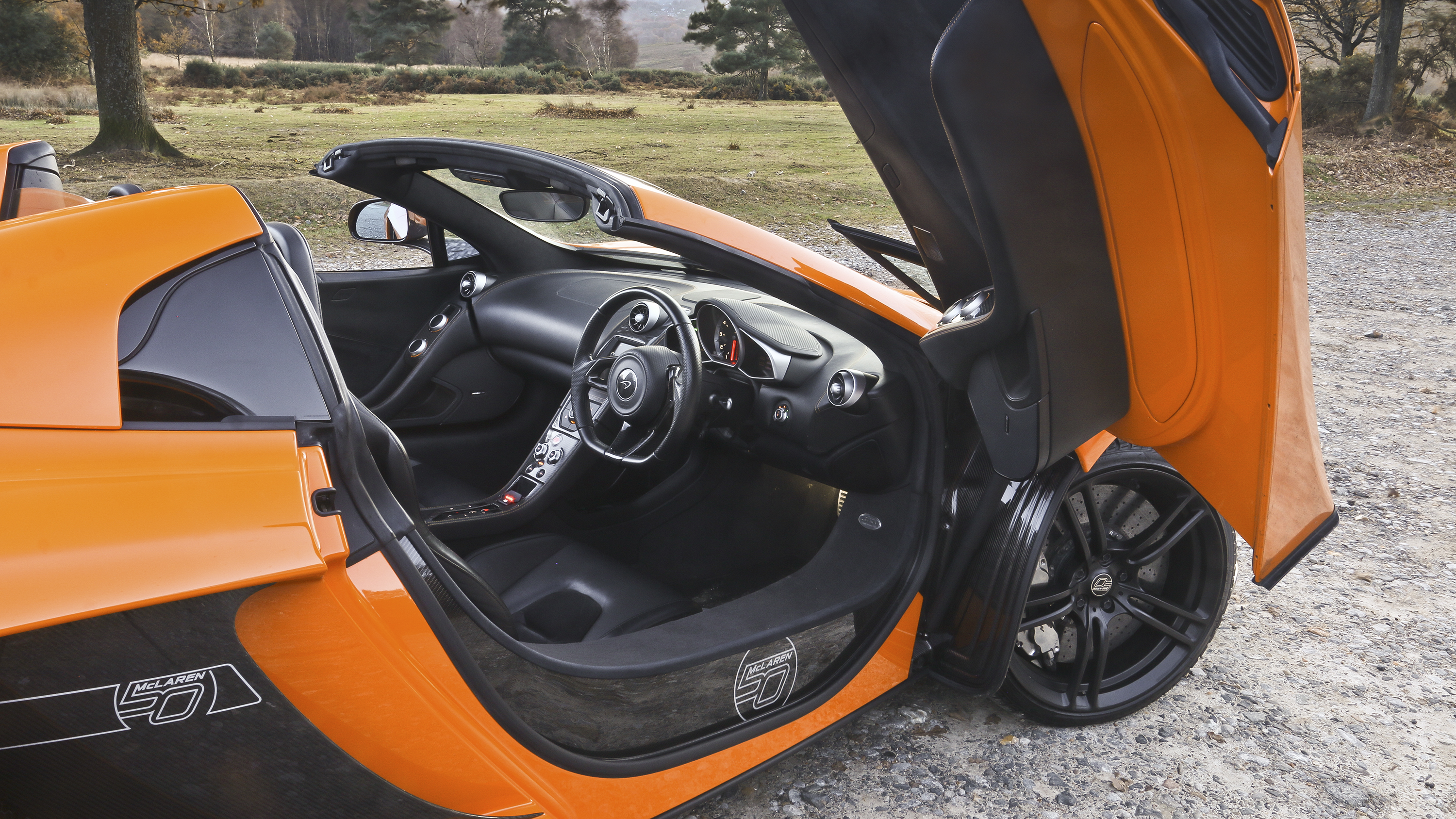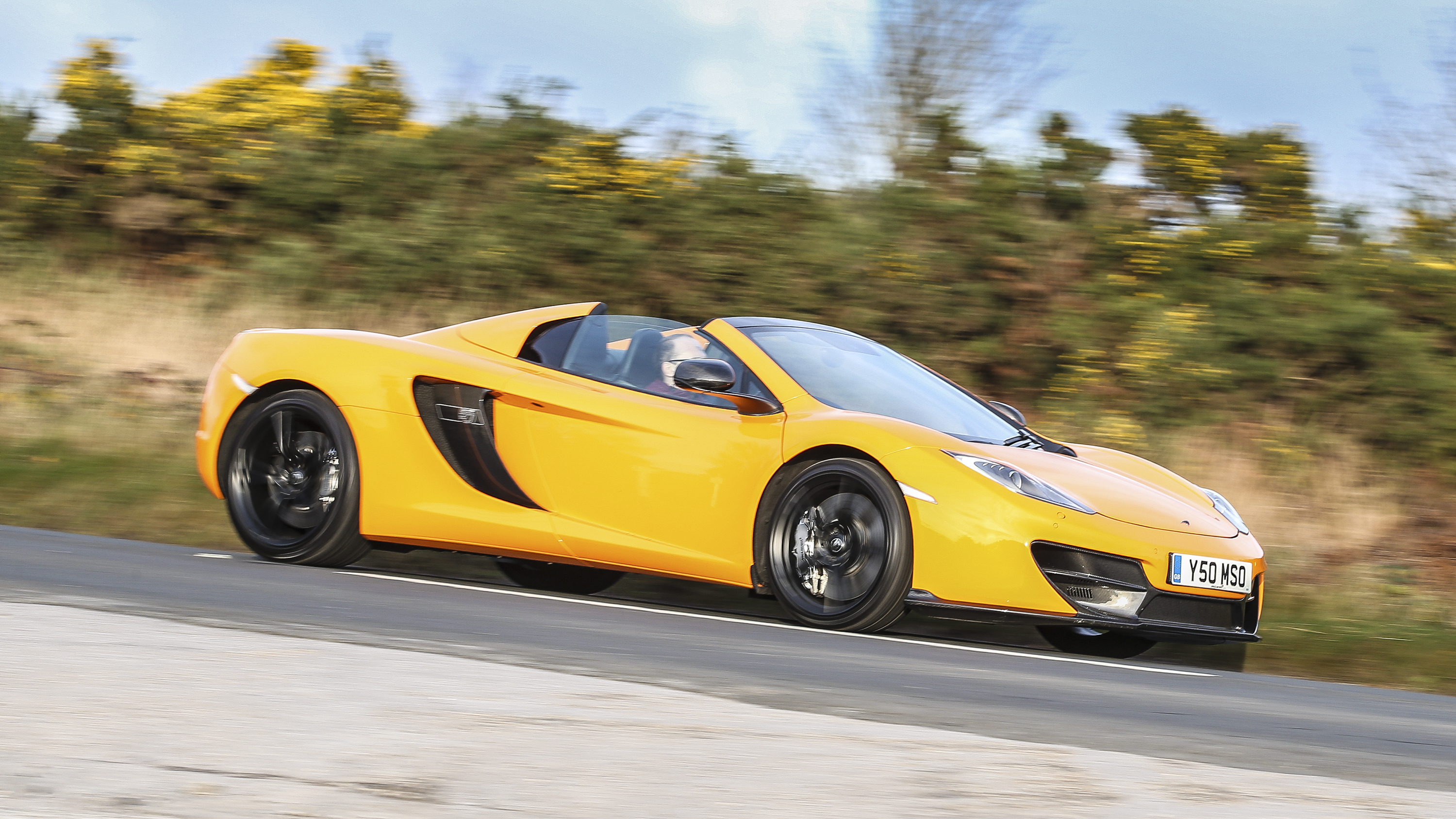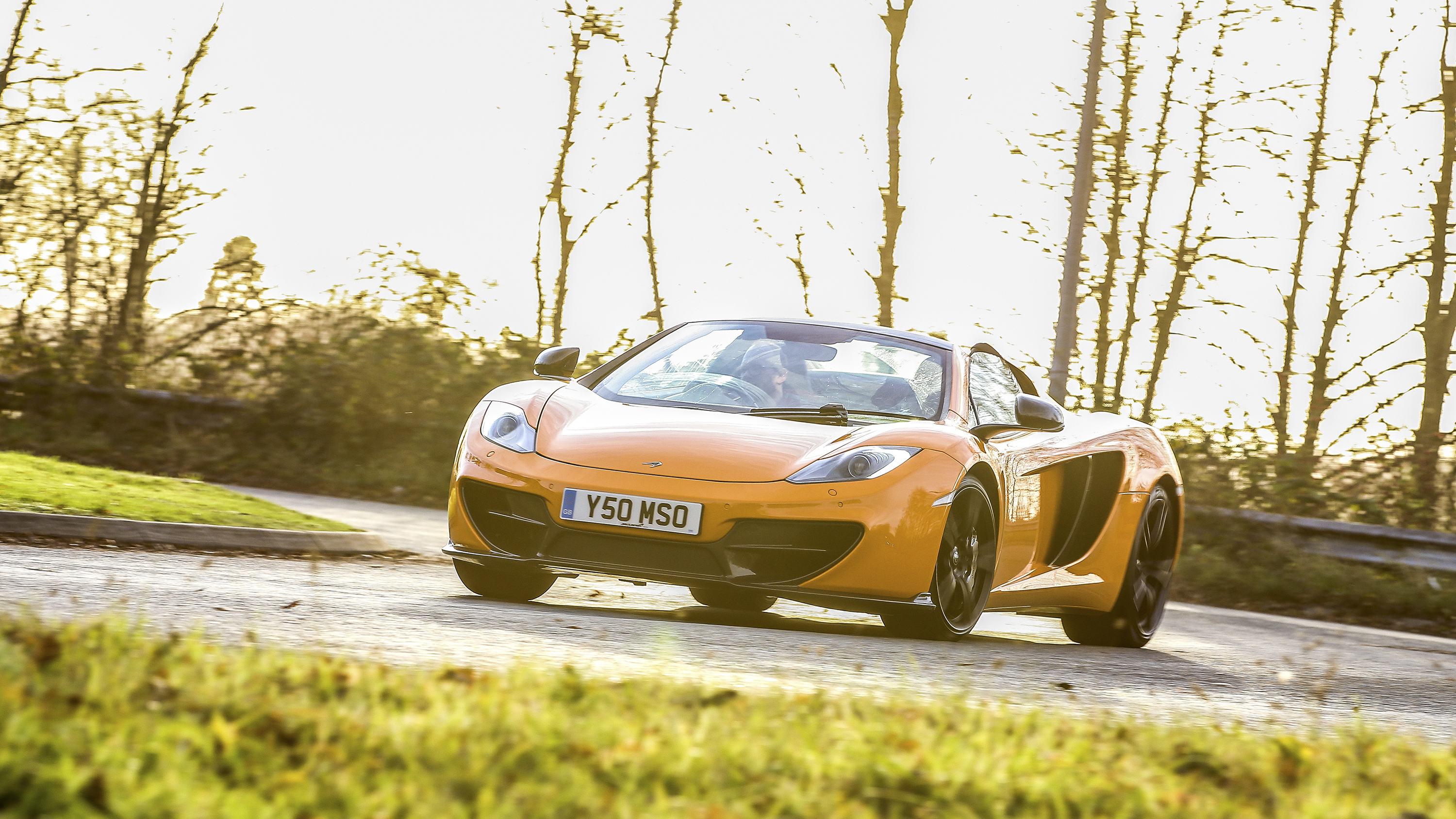
McLaren 12C review
Buying
What should I be paying?
We spoke to Alastair Bols, who specialises in selling McLaren Automotive cars, having spent several years working for one of the company’s UK dealerships.
“Overall the McLaren 12C is a phenomenally dependable car, with many thousands of miles being reliably driven and enjoyed by their owners. I am terribly proud to be a part of the extended McLaren family so to speak. Of the following points none are horrible in the scheme of things, but I hope they help as a buying guide.
“As the 12C settles into five years of life, one thing that is becoming noted is the suspension,” he says. “There’s a hydraulic actuator on each corner and these can require maintenance.”
They don’t fail as such, but their wear can trigger a PCC fault warning on the dashboard or a self-levelling adjustment of the car when it’s stationary or you’re changing the Handling Control; if the actuator is at fault, one replacement is around £850, but fixing all four comes to around £1,800.
So, in the grand scheme of supercar costs, it’s probably worth doing them all together. If the car is under warranty, replacement will be covered by that.
The rear lights have a tendency to suffer condensation, with the rear indicator (the top strip) and the brake light (next strip down).
If the condensation disappears 30 minutes after start up, they’re okay, but if it lingers, it’s not worth panicking. Just wait until you get a fail light on the dash and then get a replacement.
“If you’re buying a car, really please don’t worry about it, it affects them all and even new ones can do the same within days, so just go with it,” says Alastair. “Don’t turn away from a car just because it has this issue.”
Again, if the car is under warranty, they should be replaced as part of it. If not, you’re looking at around £500 to fix the brake light, around £550 for the indicator, or £700 for both.
Upon launch, the 12C suffered criticism for how iffy its IRIS infotainment system was. The earliest cars ran the first generation IRIS 1 system, which McLaren has stopped updates for.
Alastair advises it’s easy enough to work with so long as you understand how it works and don’t attempt to hook your phone up via Bluetooth, which tends to make the system crash.
IRIS 2 doesn’t seem to be crash-prone at all and you can purchase this as a hardware upgrade for earlier cars to run the new system for around £3,000. “Now that the 12C is this far down the line, I’m not sure it’s worth it,” says Alastair.
He also advises that as the earliest cars become really sought after, for their originality, they might be more desirable with their original system fitted. Even if it isn’t the best…
The engine is described as ‘bulletproof’, and oil top ups outside of the 12C’s desired 12 month/10,000 mile servicing schedule are rare. Those services cost around £1,500, if you’re wondering.
The gearbox does have a known oil seal issue, which can cause an oil leak from the transmission. As a sealed unit, dealers can currently only replace the unit rather than fix the small seal, and this is a good reason to have a decent warranty. Alastair estimates around five per cent of cars have had an oil leak from the transmission.
Make sure the car comes with its original trickle charger, too, and use it if the car is going to be standing a little while. If the battery goes dead, you’ll be kicking yourself: it’s deliberately tucked away so that you don’t jump start it (it’s a trick, lithium-ion battery) and if your car is in a garage, it could end up a bit stuck. So keep it on charge.
Other maintenance costs? The 12C is very light on consumables, so tyres and brakes should both last 10,000 miles or more if your road use is mixed and you don’t often visit trackdays.
The car requires Pirelli P Zero or Corsa tyres, with MC1 approval, and a full set will be around £1,200. Brake pads all round will be about £930, pads and discs all round costing £3,000. Only 10 per cent of 12Cs sold with optional carbon ceramic brakes, and the standard steel setup is more than good enough.
Fuel economy can range from sub-10mpg in traffic or on circuit to 30mpg on a comfy cruise. Typical usage should average out around 20-22mpg, which is pretty damn good for a 600bhp supercar. You’re best using posh fuel – 98 or higher – but it’ll take cheaper fuel if need be.
Later 12Cs came with a suspension lift system that raises the whole vehicle to better get you over speed bumps, but so supple is the 12C, it’s not worth busting a gut to make sure your car has it. It’s rare on coupes anyway. Just avoid multi-storey car parks that you think might pose an issue…
A more tangible benefit to 2013 model year cars is the fitment of actual buttons on the doors, which makes opening them easy. Earlier cars were opened with either a double click of the key fob, or a cocksure swipe of the bodywork where you’d imagine a handle to be.
Naturally, this would never work quite as you hoped, but Alastair insists it’s “99 per cent user error”, and you simply have to learn how to do it properly.
Look for light corrosion on the underside lip of the front bonnet, and you’ll want paint protection, too, especially for the more expensive ‘elite’ colours, to shield it from unsightly chipping.
And see if the tracking system is working: if the car has been stored, and the subscription not maintained by its previous owner, the system simply freezes and can’t be restored. A replacement tracker is around £900, and given the 12C’s delicate electrics, you’ll want a fitter who’s worked on a McLaren before.
So, warranties. Independent dealers like Alastair’s offer their own, but McLaren does one too, which can currently be used to cover cars up to their 12th birthday. More than 3,000 McLarens are now over three years old, and the cover is suitable for anything showing under 100,000 miles. So, um, all of them.
It can be bought in 12- or 24-month stints right up to the car’s 10th birthday, covers unlimited mileage, and comes with roadside cover. You’ll get at least one year of cover if you a used car sold directly through McLaren via its ‘Qualified’ second-hand scheme. A superbly unsubtle Formula 1 nod, there.
All cars sold through Qualified will have had a meticulous check and all the latest upgrades, McLaren claiming it will be ‘as good, if not better” than new. So that means the earliest, 592bhp cars will get the upgrade to 616bhp and an update for the paddleshift responses too. It brings warranty cover, roadside assistance, and the opportunity to spec MSO bespoke parts – so more carbon, if you feel there’s not enough – as if you were buying the car new.
Featured

Trending this week
- Car Review
BMW iX3






